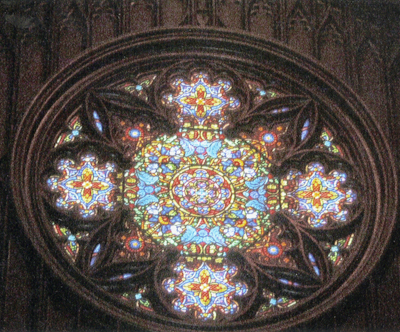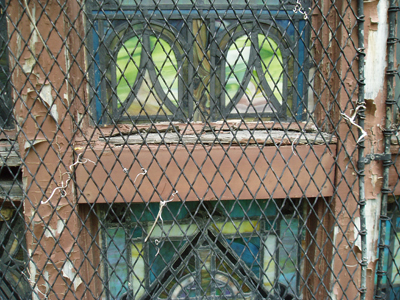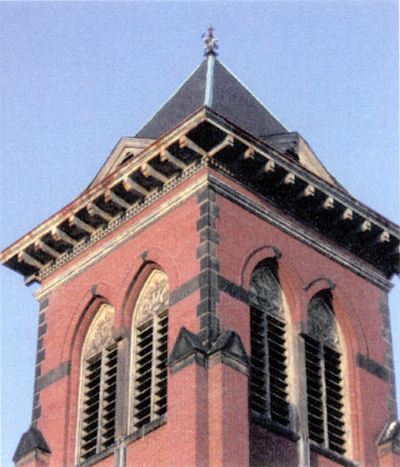
Category Archive: Historic Properties
-
Worrisome in Manchester
PHLF News
March 7, 2008City of Pittsburgh’s Department of Building Inspection continues to list deteriorated, but architecturally valuable houses in Manchester for demolition.
If these houses are lost, the magic of historic Manchester will be forfeited and can never be recovered. It is the architectural continuity of Manchester that makes it such an attractive place to live.
We are working with the City and the Manchester Citizens Corporation to try to develop ways to keep these buildings, and we seek new owners for them.
Cost of acquisitions are low; call Tom Hardy at Manchester Citizens Corporation: 412/323-1743.
-
Kelly Farm Log House For Sale – McKeesport, PA
Description Property
ID :0652-G-00059-0000-00 Property Name : Kelly Farm Log Cabin Address: 1235 Greenock–Buena Vista Road City, State, Zip Code: Elizabeth TWP , PA 15135 Sale Price : $50,000.00
News Articles Describing Building
- Property owner uncovers log home
- Log cabin beneath dilapidated home gives new owner a window into past
Architectural Style: Log Cabin Architect / Builder: Unknown Year Built : early 1800’s Property Type: Residential, Single Family Lot Size: 1.27 acres Stories: 2 Building Area : 1,248 sq. ft Water: Public Sewage: Public Parkling: Off Street Exterior Views 


Additional Information School District: Elizabeth Forward Contact Information Company: Jack Miller
Pittsburgh History & Landmarks FoundationAddress: 100 West Station Square Drive, STE 450
Pittsburgh, PA 15219Phone
No.:1-412-471-5808 Toll
Free:1-877-471-5808 Fax
No.:1-412-471-1633 Email: -
Pittsburgh History & Landmarks Foundation Awards $84,700 in Grants and Technical Assistance to 15 Historic Religious Properties in Allegheny County
PHLF News
March 6, 2008
By Carole MalakoffOn February 7, George C. Dorman, trustee of the Pittsburgh History & Landmarks Foundation (Landmarks) and Chair of its Historic Religious Properties Committee, announced the 2008 Historic Religious Properties Grants and Technical Assistance Awards at the Annual Awards Ceremony in the Landmarks Building at Station Square, where Landmarks is headquartered.
The program, now in its eleventh year, assists architecturally-significant religious properties in Allegheny County that provide community services in the neighborhoods, have active congregations, and are able to match the grant. Grants are used for architectural restoration projects on the structures and this year ranged between $3,200 and $10,000.
Thirty-five applications for grants and technical assistance from historic religious institutions located throughout Allegheny County were reviewed; eleven congregations received grants and three others received technical assistance. One congregation was awarded an energy conservation audit funded by the Saxer Family Foundation. Applicable grants awarded this year include restoration of stained glass, masonry work, roof and parapet repairs, and bell tower work. Technical assistance is directed to assisting congregations in prioritizing restoration projects and establishing preventive maintenance programs.
The following eleven churches were awarded grants:
- Epiphany Church, The Hill
- Episcopal Church of the Nativity, Crafton
- Grace Episcopal Church, Mt. Washington
- Hazelwood Christian Church, Hazelwood
- Incarnation of the Lord Church, Observatory Hill
- Mt. Lebanon United Presbyterian Church, Mt. Lebanon
- Presbyterian Church of Mt. Washington, Mt. Washington
- Riverview United Presbyterian Church, Observatory Hill
- Sacred Heart Church, Shadyside
- St. Matthew Lutheran Church, East Allegheny
- Trinity Cathedral, Downtown
Receiving technical assistance are:
- Everlasting Covenant Cathedral, Larimer
- Greater Pittsburgh Gospel Deliverance Center, Bloomfield/Friendship
- Second United Presbyterian Church of Wilkinsburg
An energy audit will be conducted for:
- The Pittsburgh New Church, Point Breeze
The Historic Religious Properties Grants Program is funded by annual year-end gifts from Landmarks members and trustees and from general funds budgeted by Landmarks.
For more information on this and other programs, please contact Carole Malakoff, Coordinator, Historic Religious Properties Program, at 412-471-5808, hrp@phlf.org, or visit the website www.phlf.org.
Founded in 1964 and now recognized as one of the nation’s most innovative and effective nonprofit historic preservation organizations, the Pittsburgh History & Landmarks Foundation works to:
- Identify and save historically-significant places;
- revitalize historic neighborhoods, towns, and urban areas;
- preserve historic farms and historic-designed landscapes; and
- educate people about the Pittsburgh region’s rich architectural heritage.
-
Selling Pittsburgh’s Strip District
By Tony LaRussa
TRIBUNE-REVIEW
Friday, February 29, 2008Buzz up!
The deal is off.
The city is bagging plans to turn the produce terminal on Smallman Street in the Strip District into a trendy marketplace.
The Urban Redevelopment Authority, which owns the 140,000-square-foot Pennsylvania Railroad Fruit Auction & Sales Building, signed five-year leases with the tenants last month, leaving just 6 percent of the building unoccupied.
“There’s been a change in thinking away from creating a market house under a single roof to a concept in which the entire Strip is viewed as the city’s market district,” said Rob Stephany, URA deputy executive director. “Ultimately, we want to create a really vibrant retail environment along Smallman and the sides streets that connect with Penn Avenue.
“We see the (produce) terminal building as just one part of the market district.”
Community development group Neighbors in the Strip proposed using $8 million in state and local grants to transform the terminal into a marketplace.The URA is open to leasing the available 8,000 square feet in the building — or space on the outside platform and along Smallman — to vendors, Stephany said. The URA will work with Neighbors in the Strip to devise plans to advance the market district concept, he said.
Becky Rodgers, executive director of Neighbors in the Strip, said advancing the market district concept will require her organization to focus on projects such as:
• Attracting more residential development
• Branding and marketing the neighborhood as Pittsburgh’s market district
• Helping property owners develop under-utilized second and third floors
• Making Smallman Street safer for pedestrians
• Erecting signs listing the type and location of Strip businesses
• Helping property owners develop “mini-market houses” in buildings that might be too large for a single business.
“Our goal is to promote economic development while preserving the historic character of the Strip,” Rodgers said. “The traditional grittiness is something that stakeholders have said they want preserved.”
Brad Kokowski, who’s owned Superior Produce in the terminal building for 20 years, likes the idea of attracting shoppers from the busy Penn Avenue corridor.
“Right now, there aren’t a lot of reasons for people to come over here,” said Kokowski, whose business is a combination of wholesale and retail. “If it’s done right, this terminal and the area around it could make a great market. I just don’t want to see businesses like mine, which have been here for a long time, pushed out for it to happen.”
Sam Patti, who owns La Prima Espresso Co. in the terminal, thinks the Strip could benefit from using the building’s empty space for more retail, wholesale or a combination of the two — as long as its basic character is not changed.
“The space needs to be clean and secure, but it doesn’t need to be anything fancy,” he said. “This is the Strip. People like the gritty atmosphere. If they want glitzy, there’s plenty of other places around for them to shop.”
Tony LaRussa can be reached at tlarussa@tribweb.com or 412-320-7987.
-
South Vo-Tech sold to become housing
Old South High site closed in 2004
Friday, February 29, 2008
By Eleanor Chute
Pittsburgh Post-GazetteThe now-empty South Vo-Tech High School, built in 1897, will have a new life as an upscale residence.
The Pittsburgh Public Schools board Wednesday approved selling the high school building, originally known as South High School, to lone bidder Gregory Development for $1.1 million. The district had set a minimum bid of $500,000.
The sale includes the original building and addition, which are bounded by Carson, 10th, Sarah and Ninth streets, but it does not include the annex located across 10th street, behind a gas station. The school has been closed since 2004, but the annex is in use.
Gregory Coyle, president of Gregory Development & Management Inc., said, “It’s going to be a high-end residential project. It will be probably 75 units, in that range.”
Whether it will be condominiums or rental units will depend on the market down the road, he said.
“I’m very excited about the prospect of developing it. I think the historical aspect is something we’re going to work very hard to maintain,” he said.
Kevin Hanley, manager of real estate and housing programs for the nonprofit South Side Local Development Co., which is not involved in the project, called the building “a gateway to the neighborhood.”
“It’s a key parcel, based on historical and architectural significance and location,” he said.
Mr. Hanley said Gregory Development previously has done some “solid work” on the South Side.
Mr. Coyle said the approval process could take up to 12 months, and construction could take another 12 months.
Mr. Coyle, who lives on the South Side, said the project is not intended for student housing, which some South Side residents had opposed.
The building was purchased as is, so the developer has to pay for the necessary environmental remediation, estimated at $700,000.
Other Gregory developments on the South Side include 1205-1213 E. Carson St. and 2026 E. Carson St.
Mr. Coyle also is a partner in ASC Development, which has been involved in projects such as a Wal-Mart-anchored shopping centers in Ebensburg, Edinboro, Bradford, Delmont and Shippensburg as well as one in Kilbuck, which was canceled after the planned site was plagued by landslides.
The school board also approved a resolution authorizing the chief operations officer and the solicitor to “expeditiously move forward with the disposal” of 20 closed buildings, for which the ongoing maintenance costs exceed a total of $1 million.
If a building fails to sell “in their initial attempt,” then the two are authorized to find a “responsible entity, within the immediate community of the school,” which could receive the building at a nominal cost.
The 20 buildings are Beltzhoover, Boggs, Burgwin, Chatham, Columbus, Connelley, East Hills, Gladstone, Knoxville, Lemington, Letsche, Madison, Mann, Miller, Morningside, Prospect, Rogers (in 2009), Vann, Washington and West Side.
Education writer Eleanor Chute can be reached at echute@post-gazette.com or 412-263-1955.
First published on February 29, 2008 at 12:00 am -
Black leaders seek delay in Schenley decision
By Bill Zlatos
TRIBUNE-REVIEW
Wednesday, February 27, 2008A group of black community leaders is urging the city school board tonight to postpone or vote against a proposal to move students from Schenley High School in Oakland.
In a letter dated today to board members, the Black Political Empowerment Project or B-PEP urged the board to reconsider Superintendent Mark Roosevelt’s proposed closing of Schenley. Roosevelt wants to close the school because of the estimated $64.3 million cost of removing asbestos and upgrading the building.
Under Roosevelt’s plan, to be voted on today, the district would close Schenley and move students this fall while it decides whether to shut the school down permanently or renovate it. As a result, the board is considering the following actions:
* Relocating Schenley students who would be in grades 10 through 12 to now-closed Reizenstein in East Liberty; * Shifting 174 students in the robotics technology program at Schenley to Peabody High School in East Liberty: and * Sending ninth graders who live in Schenley’s feeder pattern to a proposed University Prep School at Milliones in the Hill District.
B-PEP Chairman Tim Stevens recommended hold off on moving the Schenley students until the district develops a comprehensive approach to meeting the needs of the nine high schools that did not meet federal academic standards.
Bill Zlatos can be reached at bzlatos@tribweb.com or 412-320-7828.
-
North Side groups at odds over former bank’s historic status
Wednesday, February 27, 2008
By Mark Belko,
Pittsburgh Post-GazetteThe city planning commission will leave it up to City Council to decide whether a North Side building linked to prominent Chicago architect D.H. Burnham will be preserved or perhaps face the wrecking ball.
In a 3-1 vote with one abstention, the commission decided to take no action on the proposed nomination of the former Workingmen’s Savings Bank on East Ohio Street as a city historic structure after North Side groups and residents offered mixed views of the designation, with some favoring it and some opposed.
A Lawrenceville company, Bentley Commercial, recently purchased the vacant Beaux Arts-style building with the intent to redevelop it. At one point, Bentley stated it had plans to demolish the structure, triggering the nomination to preserve it.
Since then, some North Side neighborhood groups have been working with the developer to try to devise a plan that would preserve the building, built in 1902, while allowing development to proceed.
Some fear the designation, which would protect the building from demolition, could interfere with development.
Pam Minton, vice president of the Deutschtown New Hope Council, said restoration could be extremely expensive. With a historic designation, “I know what will happen, it will just sit there,” she said.
But those who supported the designation said there could be tax credits and other incentives for historic renovation that could lower Bentley’s costs.
Rather than making a recommendation, the commission decided to take no action, meaning it automatically goes to City Council, which will have 90 days to act on the nomination.
In a separate action, the commission did recommend a historic designation for a Homewood house at 7101 Apple St. that once served as headquarters of the National Negro Opera Company.
Mark Belko can be reached at mbelko@post-gazette.com or 412-263-1262.
First published on February 27, 2008 at 12:00 am -
Public Hearing Before the Planning Commission of the City of Pittsburgh on the Workingman’s Savings Bank City Historic Structure Nomination
PREPARED TESTIMONY OF
ANNE E. NELSON, ESQ.
GENERAL COUNSEL
PITTSBURGH HISTORY & LANDMARKS FOUNDATION
BEFORE THE PLANNING COMMISSION, CITY OF PITTSBURGH
ON THE WORKINGMAN’S SAVINGS BANK
CITY HISTORIC STRUCTURE NOMINATION
FEBRUARY 26, 2008
Pittsburgh History & Landmarks Foundation urges the Planning Commission to recommend to the City Council the designation of the Workingman’s Savings Bank as a City Historic Structure.
The Workingman’s Savings Bank is the anchor building on the west corner of E. Ohio Street; the historic Teutonia Mannerchor serves as the east anchor. Removing an anchor building, one of the original elements remaining on that side of East Deutschtown, will have a detrimental impact on the neighborhood. Designating the property to City Historic Structure status will not only ensure its preservation, it will encourage the future development of the area to be consistent with the size, scale, design and character of the surrounding neighborhood. This designation will have a positive impact on the adjacent properties and the surrounding neighborhood by promoting the proper redevelopment of the area.
Furthermore, the incorporation of the building into a larger development is a viable option that may benefit the owner through the use of federal historic preservation tax incentives. The Workingman’s Savings Bank was determined eligible for listing on the National Register of Historic Places on February 24, 1986. Buildings listed on or eligible for the National Register may qualify for a 20% historic rehabilitation tax credit. A property owner may also donate a preservation easement to a qualified organization to receive a charitable contribution deduction. The combination of these two historic preservation tax incentives has successfully been used on developments in Pittsburgh including the Heinz Lofts and the Armstrong Cork Factory. Our organization would be interested in receiving one. If not eligible for the National Register, a 10% tax credit is also available for substantial rehabilitation costs since the building was constructed prior to 1936.
Finally, I would like to present a letter dated February 11, 2008 from Christopher Ponticello, Legal Counsel for the Diocese of Pittsburgh, that states the Diocese has received no payment from the successful purchaser of the building in exchange for the Diocese to relinquish its rights to the property. The Diocese’s attorney should be contacted for more information.
Pittsburgh History & Landmarks Foundation supports the nomination of the Workingman’s Savings Bank to a City Historic Structure.




